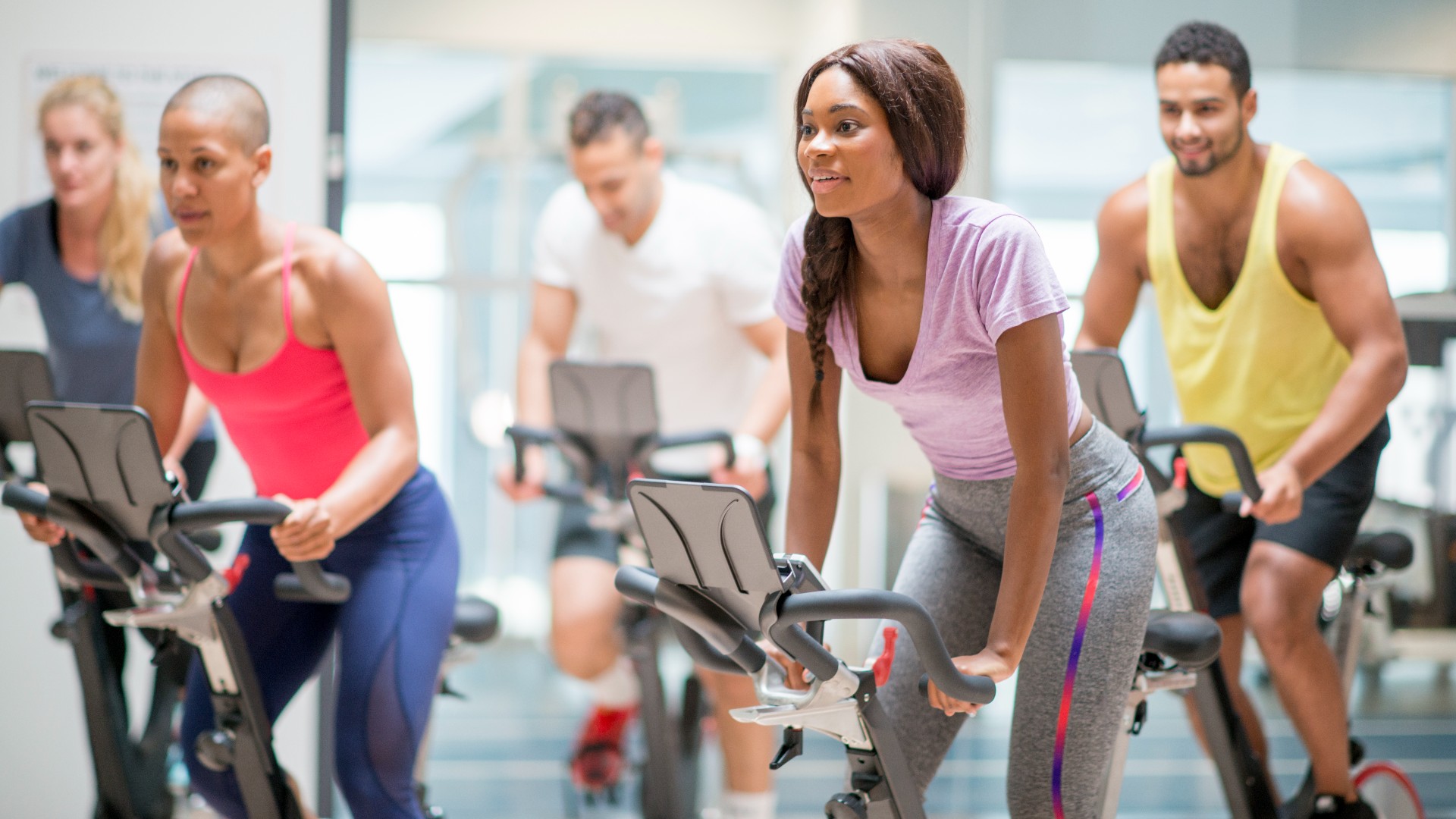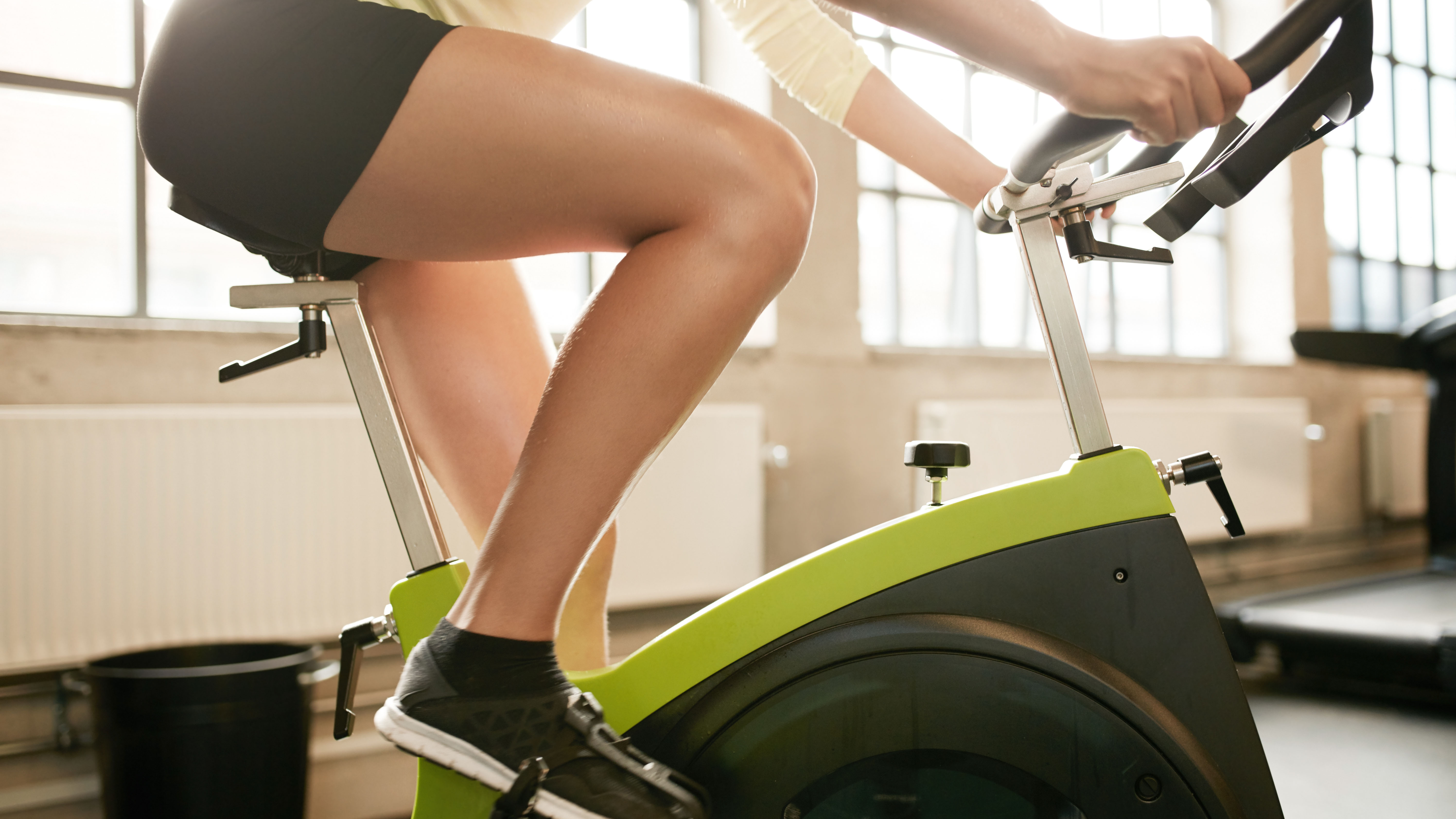Which muscles does spinning work?
Indoor cycling is a firm favourite with fitness fanatics – but which muscles does spinning work? Find out with our essential guide

There’s no two ways about it, indoor cycling hurts all over – but which muscles does spinning work, specifically?
The best exercise bikes will definitely push your leg muscles the hardest, with your glutes, quads and hamstrings picking up most of the work. While other parts of your body will get involved during the exercise, these are the primary muscles that keep the pedals turning. Your muscles are active at different points of the pedal revolution though, so you can expect to feel them burn at different stages.
Find out how to get the most out of your exercise bike and the different types of exercise bike available on the market to fuel your sweaty home spin sessions, or read on for how your muscles and muscle fiber types work together during spinning to keep things in motion.
The gluteal muscles
- Related: Does bike riding build your glutes?
When cycling upright in the saddle, your legs are doing almost 100% of the work, while your core helps to stabilise your upper body. Two major leg muscles do the majority of the workload and produce most of the power while cycling – the glutes and the quads.
Each revolution of the pedals will use different muscles at different parts. The glutes – the muscles at the surface of your buttocks – will be woken up and work hard during the first phase of the pedal revolution, when you’re pushing downwards.
"At push off on the bike, the gluteal muscles, particularly the gluteus maximus, will be most active,” says physiotherapist Lyndsay Hirst. “They will also be taking the hip from a flexed position, moving in the direction of hip extension."

The quadriceps
The quadriceps (quads) also work hard during this downwards cycle stroke – these are the big strong muscles located in your front thigh.
"During this phase, the quadriceps will contract to continue to force the pedal towards the floor and extend the knee," says Hirst. "The rectus femoris – part of the quadriceps group – will create the most force and thus work the hardest during this phase."
A 2016 study by the European Journal of Applied Physiology found that the rectus femoris was activated most in the first quadrant (the first quarter-section of a pedaling rotation) and fourth quadrant (the final section) of the crank revolution.
- Related: Best shoes for Peloton
The hamstrings
The hamstrings, the muscles at the back of your thigh, get their turn to shine on the second half of the pedal revolution (as the legs return back to their starting position). To a lesser extent the calves muscles, located at the back of your lower leg, also assist here.
This upwards “pulling” movement is boosted if the cyclist is wearing clipless pedals (somewhat counterintuitively, this means when you’re wearing specialist spinning shoes that clip into the bike pedals).
"As the pedal begins its journey backwards and the knee starts to flex, the hamstrings will now also be active," says Hirst.
Other muscles
There are several other muscles that receive a workout while on the bike, many of which you might not have thought about. "The ankle’s plantar flexors and dorsi flexors will also play a role in helping to stabilise the foot on the pedal," says Hirst.
And your arm muscles shouldn’t feel left out, either. Your shoulders, biceps, triceps and pectorals do plenty of work when you are up out of the saddle, for example while climbing steep (virtual) hills, sprinting through fast sections or pushing through the high-resistance parts of a spin class.
Does bike riding work your abs? There isn't much that a spin session doesn't target. Your core should get some good work when you're out of the saddle, as it's working to keep you upright and supported.
Bibliography
da Silva, J. C. L., Tarassova, O., Ekblom, M. M., Andersson, E., Rönquist, G., & Arndt, A. (2016). Quadriceps and hamstring muscle activity during cycling as measured with intramuscular electromyography. European Journal of Applied Physiology, 116(9), 1807–1817. https://doi.org/10.1007/s00421-016-3428-5
Sign up for the Live Science daily newsletter now
Get the world’s most fascinating discoveries delivered straight to your inbox.
When not seeking out new running and cycling trails, Howard writes about all things health and fitness as a freelance writer for a range of newspapers, magazines and websites. Howard’s writing has featured in publications including ShortList, The Telegraph, The Times, T3, Mpora, The Week Junior, Red Bull, Red Bulletin, Runner’s World, Trail Running, Women's Running, Fit&Well, Cycling Weekly, Penguin.co.uk. Howard studied Journalism, Film and Broadcasting at Cardiff University, and also has a postgraduate diploma in Magazine Journalism from the same university.











